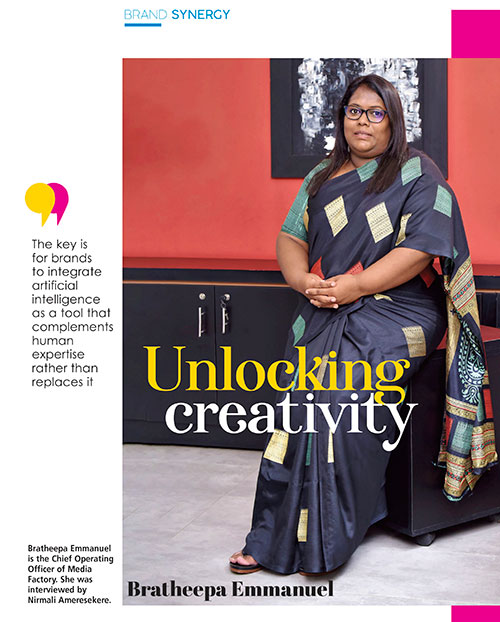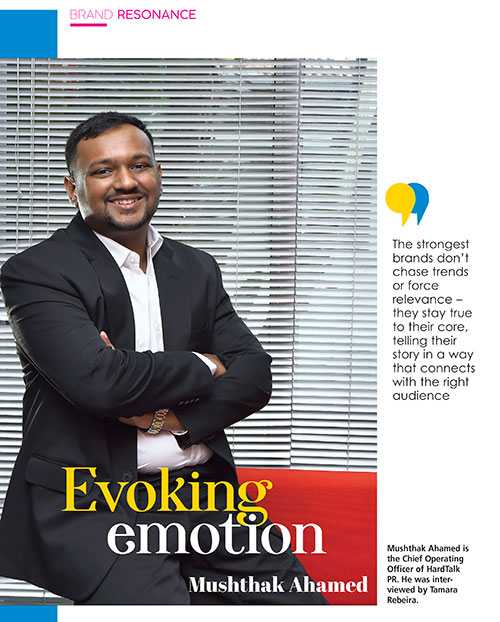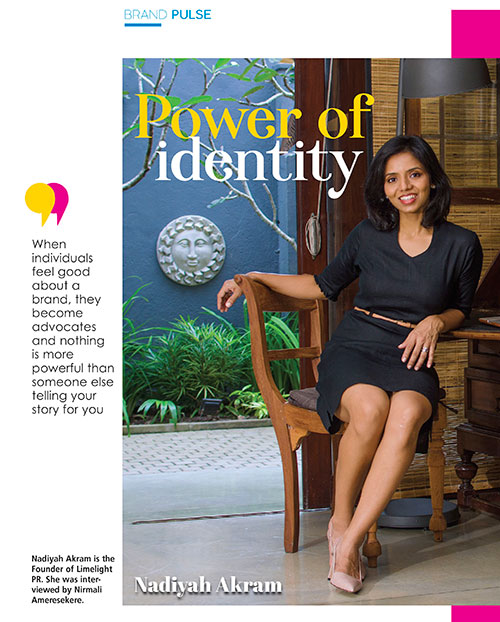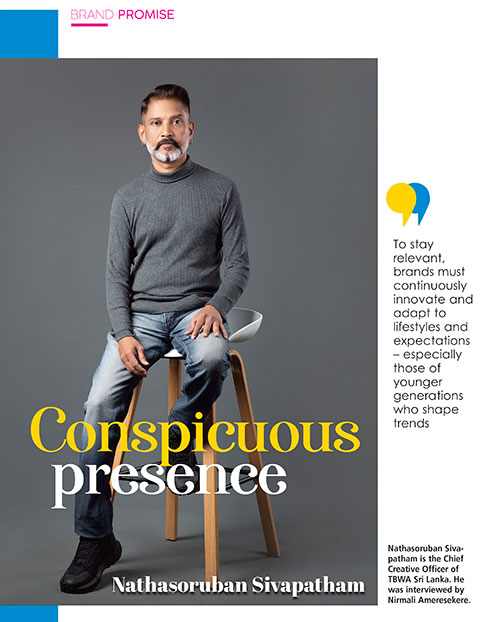NATIONAL BRANDS
SRI LANKA’S HIDDEN GEMS
Yamini Sequeira looks back at the nation’s history as a shapeshifter in branding
Across a history spanning more than 2,500 years, it has been called Taprobane, Serendib, Ceilão, Zeylan and Ceylon at various points in time by every colonial power that put its flag down in the verdant land. The emerald island was viewed as an exotic land replete with intoxicating spices, tea and gems – a land of beauty and oriental mysticism.
As the island carved out a new identity as a progressive and modern nation by casting off the colonial chains to claim the indigenous name of Sri Lanka, it was seen as one on the march to becoming the wonder of Southeast Asia by none other than Lee Kuan Yew, Singapore’s founder, who hoped his city state would be like the emerald isle one day…
Unfortunately, a 26 year civil war disrupted the nation branding process. Having ended the war in 2009, the country resuscitated itself, only to be stymied by political strife and an unprecedented economic crisis in 2022.
Two steps forward and three steps back, it would seem…
So it’s been an uphill task for branding experts to get a fix on how to brand the nation. Despite massive advertising budgets, a meaningful tourism tag line that truly reflects the country’s authentic self has been hard to come by.
And yet, the island nation has shared its hidden gems with the world.
We are not talking about its sapphires here – one of which glittered in a choker worn by the late Princess Diana – but its hidden treasures, which have become synonymous with Sri Lanka’s identity.

CEYLON TEA Perhaps the best-known export brand out of Sri Lanka, Ceylon Tea is the closest to a sensorial experience that the island offers. Feted in high places and present across the world’s continents, ‘Pure Ceylon Tea,’ plucked from the misty highlands, is considered the ambrosia of the gods by connoisseurs of the golden brew.
Pure Ceylon Tea reflects the soft power wielded by brands as cultural influences in the global sphere; and at times, it may be even more
powerful than hard power!
Brand influence is not to be taken lightly; it has a profound impact on a country’s image while shaping global perceptions as a national brand as well. By having Pure Ceylon Tea consumed by millions across the globe, the famed cuppa subconsciously creates an interest in (and intrigue about) its country of origin.
Sri Lanka is among the world’s largest tea exporters and the Colombo Tea Auction is the single largest tea auction on Earth where 6.5 million kilogrammes are sold every week.
Despite the various challenges faced due to inclement weather and ad hoc policies, Pure Ceylon Tea sits on a pedestal around the globe as arguably the strongest national brand to emerge from Sri Lanka – and it has stood the test of time.
It is a legacy that every generation should cherish.

SRI LANKA TOURISM Over 500,000 tourists flew into Sri Lanka in the first three months of 2024 – a remarkable feat that augurs well for the rest of the year. And indeed, Sri Lanka has featured in just about every exalted travel list as one of the hottest destinations on the planet.
Come to think of it, Sri Lanka tourism has done very well, thank you – without a tag line that pulls at the heartstrings of the travel hungry looking for that next fix.
Offering an amalgam of sun, sand, lush tea plantations, adventure, wildlife, water sports, culture, religion, hospitality, spirituality and nature, the island is a microcosm of a 360 degree holiday experience.
And yet, in a world of savvy marketing, Sri Lanka tourism has had birthing pangs when it comes to delivering a tag line that truly represents its diversity. After many failed attempts, the branding process remains up in the air; or so it would seem…
A brilliant marketing campaign could accelerate the destination’s efforts to double and even triple its tourist footfall while enabling Sri Lanka tourism to reach its full potential.

SRI LANKA CRICKET In a nation where cricket is almost a religion, the island nation has for long branded its national cricketers as determined and talented warriors who never back down in the face of odds.
After lifting the ODI World Cup in 1996 and then the T20 World Cup 18 years later, Sri Lankan cricket soared to the top of the global rankings during what was a purple patch. Today, following a hiatus of some six years, there are expectations of a renaissance under a new regime of selectors.
Keeping aside the politicisation of the sport – as happens in most cricketing nations in South Asia – Sri Lanka’s successes in the legendary and hallowed cricketing grounds of the world have given birth to a million dreams.
A legion of young boys dressed in crisp whites engage in gruelling practices at the nets under the blazing sun across the cricketing ovals around the island. The Royal-Thomian (or ‘Battle of the Blues,’ as it is known) is the world’s second oldest uninterrupted cricket match, which completed 145 years this year.
In the ultimate analysis after the stands are empty, ‘cricket, luverly cricket’ has unearthed some of the best talent in the country, many of whom have provided hours of joy to spectators while filling their hearts with a sense of pride and patriotism.

APPAREL AND TEXTILES Across the world, it’s common to shop for apparel at Calvin Klein, Tommy Hilfiger, GAP, Nike, Victoria’s Secret, ASOS, Next, Marks & Spencer, Patagonia, Ralph Lauren and other designer stores, only to find a ‘Made in Sri Lanka’ label.
The label is a source of pride for the country amid fierce competition from cheaper apparel manufacturing destinations in the region and beyond.
Apparel manufactured in Sri Lanka is sustainable and ethical, which is no small feat among the sweatshops in other countries. Renowned apparel manufacturing has also offered a source of employment and empowerment, particularly for Sri Lankan women.
The island’s top three apparel manufacturers are already among the world’s 50 most important suppliers, according to the Sri Lanka Export Development Board (EDB).
More importantly, Sri Lankan apparel and textile manufacturers have evolved fast, catapulting ahead to incorporate sophisticated tech, design and innovation into their apparel solutions.
Indeed, the nation’s prowess in apparel and textile manufacturing is universally acknowledged by global brands.

GEMS AND JEWELLERY Once dubbed ‘Ratna-Dweepa’ (or the ‘Island of Gems’), tales about the beauty of gems found in Sri Lanka’s soil are legendary, registering mentions in travelogues by ancient travellers and traders thousands of years ago.
Rubies, sapphire, topaz and other colourful twinkling stones travel from the dusty mines of Sri Lanka to grace the personal jewellery collections of the rich and famous.
Sri Lanka is currently positioned in the global market as a supplier of high quality gems, and reputed as a quality cutting and finishing centre in the world, producing stones that meet the highest standard.
Counted among the five most important gem bearing nations on Earth, Sri Lanka is the world’s leading sapphire producer. The National Gem and Jewellery Authority is working on branding these sapphires as ‘Ceylon Sapphires,’ which will affirm the country of origin and infuse greater brand equity.
Symbolising nobility, truth, sincerity and faithfulness, sapphires have decorated the robes of royalty and the clergy for centuries while today, they’re prized and coveted by the rich and famous around the world.

EMERGING BRANDS As a developing nation, Sri Lanka cannot afford to depend on a handful of traditional exports to grow its economy.
It has to evolve with global trends and sure enough, we are seeing the emergence of local agricultural exports – including natural rubber and coconut-based products, spices and herbal cosmetics – finding their way into global markets.
Following in the footsteps of Pure Ceylon Tea, ‘Pure Ceylon Cinnamon’ is the premier trademark for the finest Ceylon Cinnamon, which is relished around the world.
Cinnamon grown and produced in Sri Lanka has acquired a longstanding reputation in the international market for its unique quality, colour, flavour and aroma. As a popular spice across a spectrum of cuisines, the demand for cinnamon continues to grow and the Pure Ceylon Cinnamon branding will surely strengthen Brand Sri Lanka in the years ahead.
Local entrepreneurs are experimenting with homegrown skills and innovation, in the spheres of handloom textiles and traditional crafts, but lack the scale needed to drive exports. In many cases, not having a large domestic market has made it harder to go global so to speak.
At the end of the day, brand building is an investment that calls for substantial funding and loosened purse strings to garner mind share. Still untouched by commercialisation and excessive consumption, Sri Lanka has the advantage of nurturing craftsmanship and traditions, which can be packaged and exported as authentic and ethically produced.
Ultimately, successful brands have to exude an innate sense of authenticity and ‘globality,’ and be able to cross geographical and cultural borders. That’s the name of the game!





